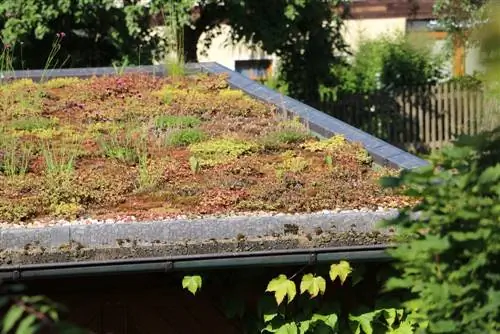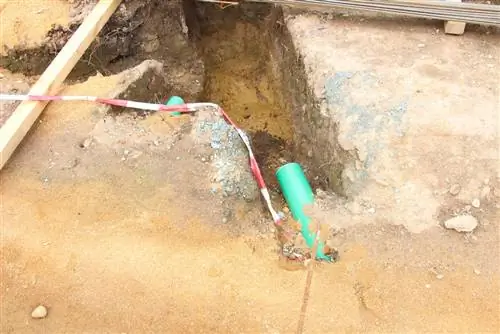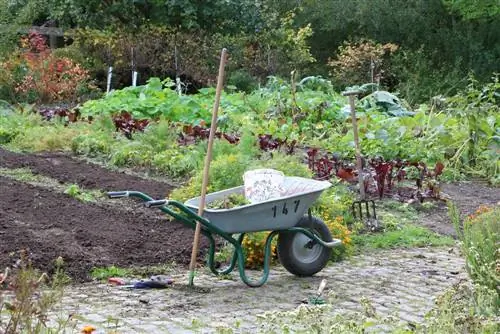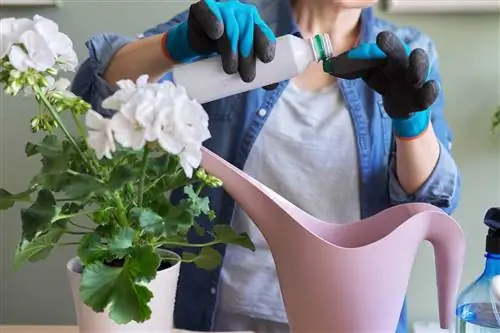- Author admin [email protected].
- Public 2023-12-17 03:39.
- Last modified 2025-01-24 12:45.
A green roof, i.e. one with plants, is easy to make yourself - provided you have permission and it is a stable roof. In the vast majority of cases, extensive rather than intensive planting will be used. However, it is always important to have the correct structure of the individual soil or substrate layers. You also need the right plants.
Advantages
There are many good reasons, especially in cities, to plant the roof of a building and turn it into something like a green oasis. In fact, such greenery actually only has advantages. The most important of these advantages are:
- Improving air quality in the city
- Improving the indoor climate
- Protecting the roof
- optimal thermal insulation
- optical enhancement of a building
- Creation of a new habitat for certain animal species
- Creating a retreat space for people
Ultimately, every green roof is an important contribution to the ecology in urban areas. It promotes the well-being of people and animals, especially insects. Greening the roof is also an active contribution to sensible nature and he alth protection.
Note:
The many advantages of a green roof have led to cities now providing funding. The contact person for this is usually the municipal environmental office.
Requirements

In principle, any type of roof can be greened. However, in an urban environment, flat roofs and roofs with a very slight incline will be the most suitable. This is simply for practical reasons, as a gable roof, for example, is difficult or requires a lot of effort to plant. However, the possible load capacity of the roof is more important than the shape. The greenery leads to a significant weight load. An extensive design can easily result in a load of 40 to 80 kilograms per square meter. The roof must definitely be able to withstand this. For comparison: the gravel fill that is often applied to flat roofs leads to a load of 60 to 120 kilograms. Intensive greenery with bushes or even trees can of course result in loads of up to 200 kilograms.
Note:
Before you start building a green roof yourself, it is advisable to have the maximum possible load calculated by a specialist. The main candidates for this are architects, civil engineers and structural engineers.
Construction
In order to grow green on a roof, you need soil or a planting substrate. However, this is only the last or top layer that needs to be applied. Specifically, the following structure is required from bottom to top:
- Separation layer made of geotextiles such as fleeces
- Root protection made from plastic sheets or liquid waterproofing such as polyester resins
- Protective layer made of plastic or concrete panels
- Drainage layer made of gravel, lava or pumice rock
- Filter layer made of geotextiles
- Vegetation layer made of various plant substrates
The first three layers serve exclusively to protect the roof and are intended in particular to prevent it from being damaged by roots or biochemical processes. The three following layers in turn enable plant growth in the first place. The drainage layer ensures that waterlogging does not occur.
Plants
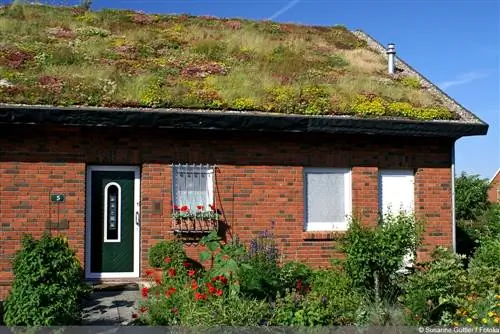
For extensive green roofs, only plants that do not have a high weight and do not have deep roots can be considered. These mainly include:
- Grasses
- Moose
- Herbs
- Succulents
The individual plant species are usually combined with each other. This opens up individual design options. Shrubs or smaller trees tend to belong to the intensive greenery category. They are not suitable for the extensive variant. Basically, when choosing plants, you should make sure to only use species that require little or no care. It is also important that they correspond to the site conditions. The most important point is that the plants will always be exposed to direct sunlight and a lot of wind.
Do it yourself
If you want to do your own green roof, you should plan well in advance. It is particularly important to determine the material and plant requirements. Complete sets from specialist retailers that contain almost everything you need for greening are recommended. The sets are usually designed for a specific area. It may be necessary to combine several of these sets. The sets already contain ready-made green mats, which then only need to be rolled out on the roof-protecting layers. How to do this and how to fix it can be found in the instructions that are always included. The deciding factor for the right set is always the roof area in square meters that is to be covered with greenery. When applying the roof-protecting layers, it makes sense to ask a specialist about the right materials. The most important thing here is the material from which the roof is made - and the sealants used.
Costs

It is naturally difficult to give an exact estimate of the costs incurred for a green roof. The costs are largely determined by the expenses for the roof-protecting layers. Of course, the types of plants you want on the roof also play a role. According to the German Roof Gardeners Association, you have to expect costs of at least 25 to 35 euros per square meter.

